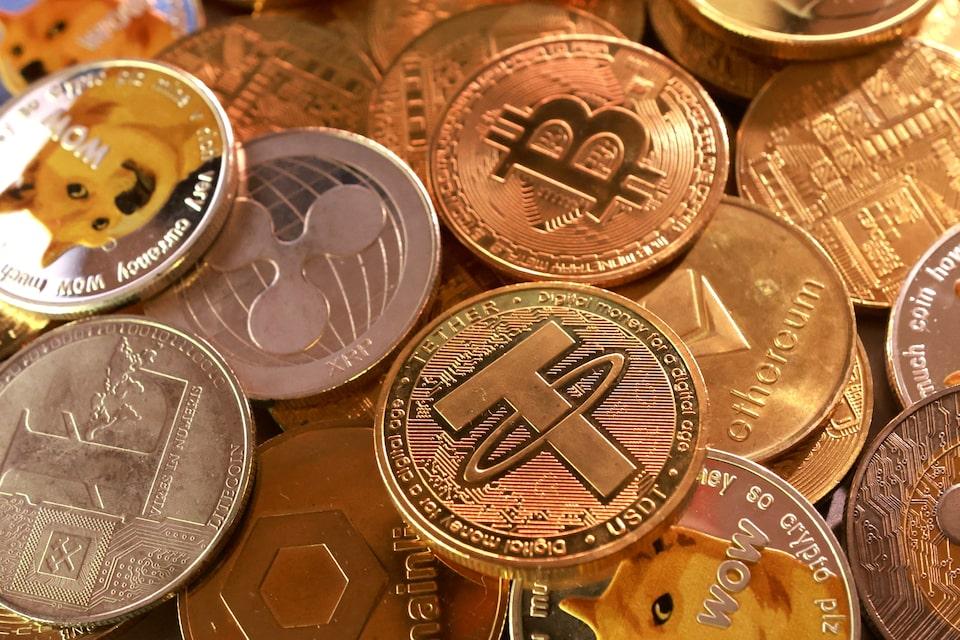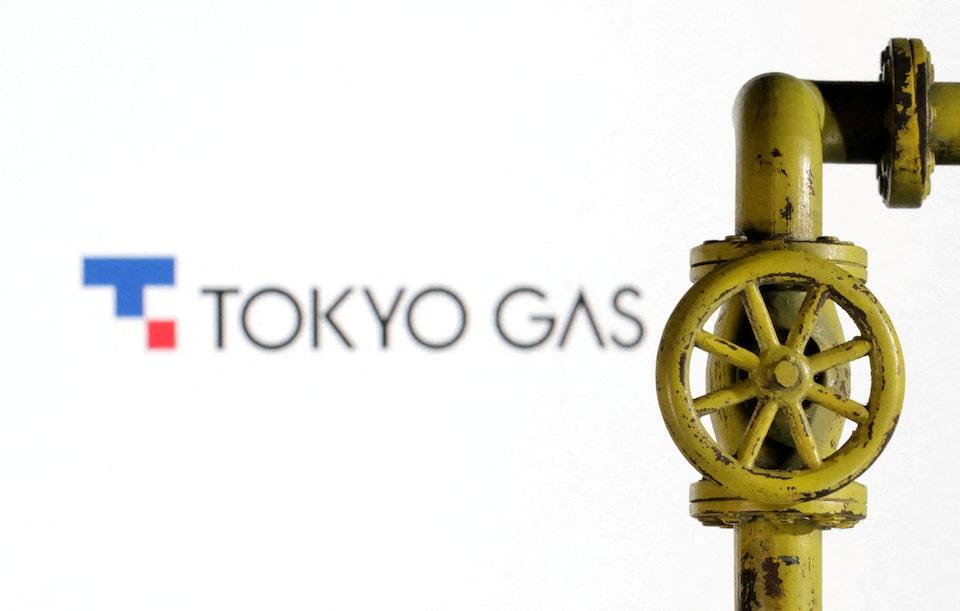2025-12-15 00:27
SEOUL, Dec 15 (Reuters) - Korea Zinc's (010130.KS) , opens new tab board will meet on Monday to vote on a plan to build a smelter to refine key minerals in the U.S. under a joint venture with the U.S. government and companies, a source familiar with the issue said, adding investments would total 10 trillion won ($6.78 billion). South Korea's Yonhap News Agency reported that the U.S. government and companies will hold a 20% stake in the joint venture with an investment of 2 trillion won, saying the facilities are expected to produce antimony and germanium. Sign up here. A spokesperson for Korea Zinc was not immediately available for comment. ($1 = 1,475.5400 won) https://www.reuters.com/world/asia-pacific/korea-zinc-board-discuss-plan-build-smelter-under-us-joint-venture-source-says-2025-12-15/

2025-12-15 00:03
LONDON, Dec 15 (Reuters) - Britain will start regulating cryptoassets from October 2027, the finance ministry said on Monday, rules it hopes will give the industry certainty while keeping out "dodgy actors". The new law - the government will introduce legislation into parliament later on Monday - will extend existing financial regulation to companies involved in crypto, aligning Britain with the U.S. rather than the European Union, which has built rules tailored to the industry. Sign up here. A draft bill giving effect to regulation has undergone only minor changes since it was published earlier this year, a ministry spokesperson said. Globally, interest in cryptoassets has surged since U.S. President Donald Trump came to power promising to embrace the industry, although the price of the largest cryptocurrency, bitcoin , has fallen sharply in recent months after hitting a record high. The U.S. is pursuing what is perceived by the industry to be a more crypto-friendly approach than Britain, while the European Union's Markets in Cryptoassets rules took effect in 2024. Britain has said it would collaborate with the U.S. on the best approach to digital assets through a "transatlantic taskforce". Finance minister Rachel Reeves said the rules would provide “clear rules of the road”, strengthen consumer protections and keep “dodgy actors” out of the market. Natalie Lewis, a partner at Travers Smith, told Reuters she hoped the changes in the final legislation would be “more than minor” as there were “quite a few technical legal problems with the original draft". Britain's regulatory regime for cryptocurrencies is taking shape, with the Financial Conduct Authority planning bespoke rules for trading and market abuse, custody and issuance, and the Bank of England last month unveiling its proposals for regulating stablecoins - a type of cryptocurrency - that are used for everyday payments. At the same time, regulators continue to warn about the risks, including that investors in cryptocurrencies should be prepared to lose all of their money. Both the BoE and the FCA have promised to finalise their rules by end-2026. Daniel Slutzkin, head of UK at crypto exchange Gemini, said firms had “long awaited regulatory clarity” and could now start preparing to meet the new requirements. https://www.reuters.com/sustainability/boards-policy-regulation/uk-regulation-cryptoassets-start-october-2027-finance-ministry-says-2025-12-15/

2025-12-14 23:41
Dec 15 (Reuters) - Australia's Fortescue (FMG.AX) , opens new tab said on Monday it would buy the remaining 64% of Alta Copper (ATCU.TO) , opens new tab, in a deal implying a total equity value of C$139 million ($101 million) for the Toronto-listed copper miner. Fortescue, through its unit Nascent Exploration, is offering C$1.40 per share in cash for the shares in Alta that it does not already own. Sign up here. The offer price represents a 14.8% premium to Alta's closing price on Friday. The deal comes as Fortescue, the world's fourth-largest iron ore miner, looks to expand in copper, which has hit record highs in recent trading as demand for the metal is forecast to soar. Other large miners including Fortescue's iron ore rivals BHP Group (BHP.AX) , opens new tab and Rio Tinto (RIO.AX) , opens new tab, (RIO.L) , opens new tab are also looking to raise their exposure to copper to diversify their portfolios. Alta Copper fully owns the Canariaco copper project in northern Peru, with a reported mineral resource of 1.1 billion metric tons at 0.42% copper equivalent grade and 0.9 billion tons at 0.29%. Shares of Fortescue were down 0.8% in early trading, in line with the broader Australian mining sub-index's (.AXMM) , opens new tab fall. ($1 = 1.3762 Canadian dollars) https://www.reuters.com/world/americas/australias-fortescue-buy-remaining-stake-alta-copper-valuing-it-101-million-2025-12-14/

2025-12-14 23:23
SEOUL, Dec 15 (Reuters) - South Korea has decided to extend bond market stabilisation programmes through next year, the financial regulator said on Monday, citing risk from monetary policy changes at home and abroad as well as increases in treasury bond issuance. The Financial Services Commission statement said its bond and short-term money market stabilisation funds of 37.6 trillion won ($25.5 billion) and real estate project financing support programmes worth 60.9 trillion won will be extended through 2026. Sign up here. The FSC also said it would pre-emptively deploy market stabilising measures if necessary, given growing caution in domestic financial markets and rising bond yields and foreign exchange volatility. The Bank of Korea kept interest rates unchanged for a fourth straight meeting last month after a weakening won reduced scope for further easing, signalling that the bank could be nearing the end of its rate-cutting cycle. ($1 = 1,474.7800 won) https://www.reuters.com/sustainability/boards-policy-regulation/south-korea-financial-regulator-extends-bond-market-stabilisation-programmes-2025-12-14/

2025-12-14 20:18
RABAT, Dec 14 (Reuters) - At least 21 people were killed in flash floods triggered by torrential rains on Sunday in Morocco's Atlantic coastal province of Safi, 330 kilometres (205 miles) south of Rabat, Moroccan authorities said. The floods also injured 32 people, and most of them have left the hospital, authorities said in a statement. Sign up here. One hour of heavy rain was enough to flood homes and shops in the old town of Safi, and sweep away cars and cut many roads in Safi and its surroundings, as rescue efforts continue, they said. Morocco is experiencing heavy rain and snowfall on the Atlas mountains, following seven years of drought that emptied some of its main reservoirs. https://www.reuters.com/business/environment/flash-floods-kill-seven-people-moroccos-safi-2025-12-14/

2025-12-14 17:03
TOKYO, Dec 15 (Reuters) - Tokyo Gas (9531.T) , opens new tab, Japan's top city gas provider, plans to direct more than half of the 350 billion yen ($2.3 billion) it has earmarked for overseas investments over the next three years to the U.S. to drive growth, CEO Shinichi Sasayama said. In October, Tokyo Gas unveiled a plan to invest up to 1.3 trillion yen in the years to March 2029, including 350 billion yen for overseas projects such as U.S. shale gas development. Sign up here. "North America is our top priority in our overseas strategy," Sasayama told Reuters in an interview last week, citing both rising U.S. domestic gas demand - driven by surging power needs for data centres and semiconductor plants - and growing demand for liquefied natural gas exports. "In recent years, we have concentrated upstream investment in East Texas shale, enhancing our cost competitiveness. Going forward we'll invest in developing these assets to boost profitability," he said. Tokyo Gas is also open to further investments in liquefaction plants or gas purchase agreements, depending on terms, Sasayama added. The Japanese utility has been expanding its U.S. shale footprint, acquiring Rockcliff Energy in Texas and Louisiana in late 2023, and in April this year buying a 70% stake in east Texas gas assets from Chevron (CVX.N) , opens new tab. Tokyo Gas, Japan's second-biggest LNG buyer, has a long-term contract to procure 1.1 million metric tons of LNG annually from Russia's Sakhalin-2 project. Japan has continued imports under a U.S. sanctions exemption that expires on December 19. Tokyo has requested an extension. "I don't think the likelihood of it really ending there (on 19th) is particularly high at this point," Sasayama said, adding the risk of an immediate supply disruption is "quite low." But he added: "I do feel that the tone of criticism (from Western allies) has grown harsher, but since this is a project contributing to stable supply, including for Japan, we will proceed in consultation with the government." Tokyo Gas bought 11.56 million tons of LNG in the fiscal year ended March 31, 2025, with nearly half sourced from Australia, which is set to issue a gas market review that could curb exports of LNG from its east coast. Sasayama said the Australian projects Tokyo Gas buys from are diversified beyond the east coast, limiting potential risks. ($1 = 155.6700 yen) https://www.reuters.com/business/energy/tokyo-gas-steer-more-than-half-overseas-investments-us-next-3-years-ceo-says-2025-12-14/
